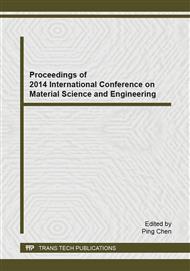p.27
p.36
p.41
p.45
p.53
p.58
p.62
p.67
p.77
Synthesis and Copper Sorption of Chestnut-Shell-Pigment/SiO2 Composite
Abstract:
The chestnut shell pigment/SiO2 composite was prepared by co-precipitation and thermal insolubilization and used to remove Cu (II) from water. The effect of the ratio of chestnut-shell-pigment to SiO2 on the removal efficiency was studied. The sorption experiments were examined by batch method. The optimal initial pH of the copper solution ranges from 4 to 6. The equilibrium data were fitted with the Langmuir than the Freundlich, and the sorption mechanism of Cu (II) suits to the former. The maximum sorption capacity derived from the Langmuir was found to be 18.87 mg g−1. The composite behaves an excellent potential for copper removal.
Info:
Periodical:
Pages:
53-57
Citation:
Online since:
October 2014
Authors:
Keywords:
Price:
Сopyright:
© 2014 Trans Tech Publications Ltd. All Rights Reserved
Share:
Citation:


